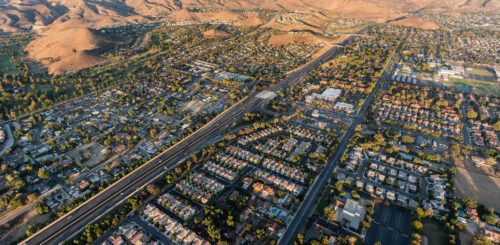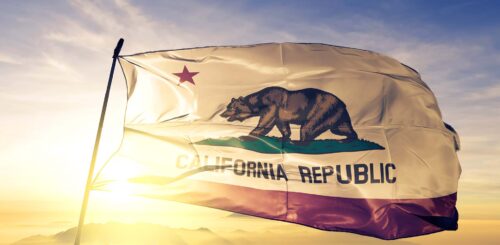Just observing the impressively high buildings and speedy living habits of this metropolis will suffice to make you feel enchanted, but there’s much more to the Big Apple than just the modern charm of skyscrapers. There are so many things to do in New York City, the unofficial capital of the world, including amazing artistic displays, vivid nightlife, excellent food, fashion shows, and whatever else comes to your mind.
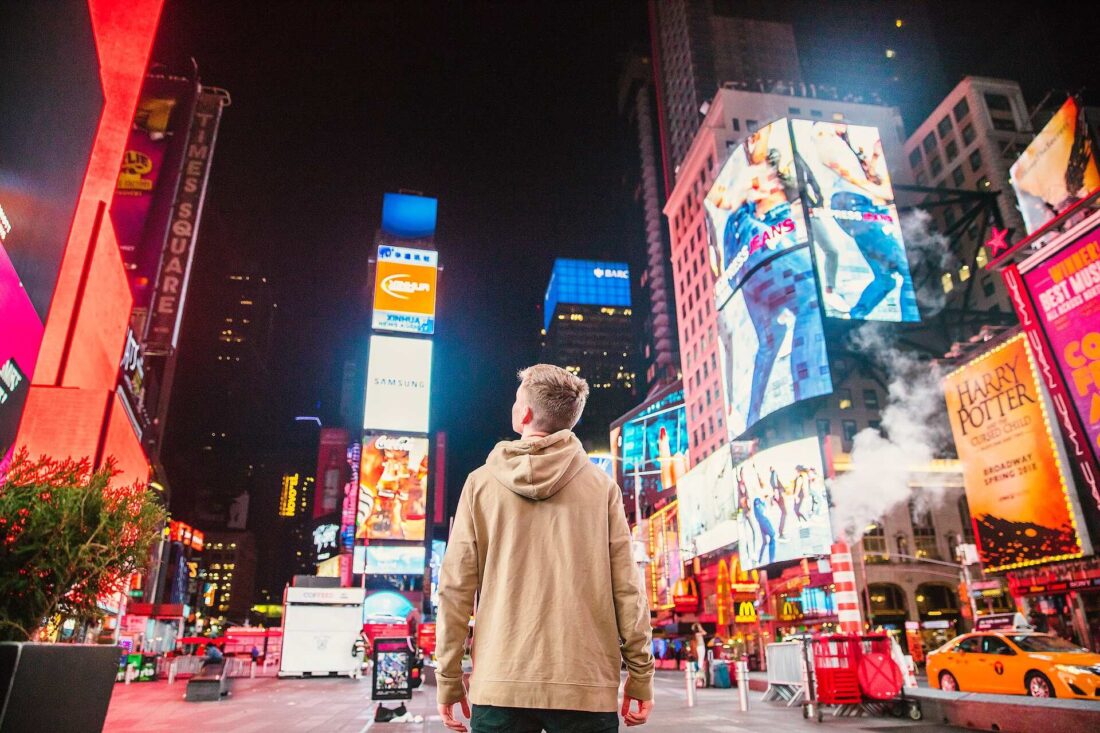

Have you decided to enjoy outdoor strolls in one of the many parks or go shopping for designer pieces on Fifth Avenue? Maybe you prefer admiring the stunning views from the Top of the Rock Observation Deck or touring the galleries and visiting famous landmarks? Whatever you choose, you will not remain indifferent to the beauty and the sheer number of things you can do in this urban jungle. And the additional perk is that there is a variety of activities you can engage in for free, including watching outdoor plays or concerts.
Have Fun Exploring the City That Never Sleeps
Regardless of whether you’re moving to New York or just visiting, exploring it can be a time-consuming effort. You can easily get immersed in its many unique and charming parts, be it Upper West Side, Midtown, Little Italy, Chinatown, Chelsea Market, Harlem, Brooklyn, or Wall Street. It will take some time to adjust to a different town, but that doesn’t have to stop you from wandering through its streets.
The best thing to do is make a plan according to your preferences and decide on the route so that you can enjoy an adventure of creating your own New York memories. Just make sure you properly calculate the cost of living in New York and include it into your moving expenses checklist, so you can make different tours of everything you want within your budget.
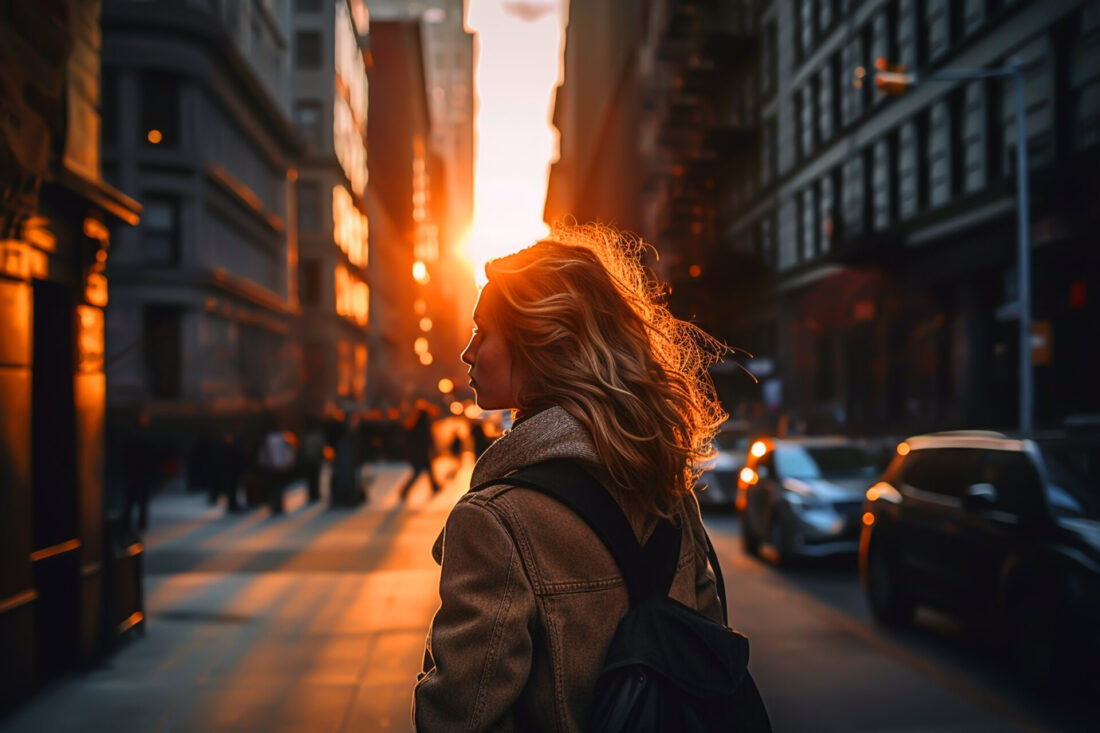

Explore Central Park
Viewed from above, Manhattan’s Central Park looks like a totally different place from the urban jungle that surrounds it. Being one of the most popular public parks in NYC and the whole country, it occupies an area of 840 acres with its rectangular and clear-cut shape. Influenced by English landscaping, this urban park was a huge achievement of the landscape architecture techniques at the time. Initially, there weren’t any statues and monuments there; they were added to the ground later to celebrate diverse communities living in the city and their authentic cultures.
The heart of the place is Bethesda Terrace, consisting of upper and lower terraces that are connected by staircases. One of them leads to a tree-lined promenade called the Mall. It is designed as a gathering place for events and provides a beautiful view of the Lake. The Lake is the largest water surface here, offering visitors a chance to engage in various water activities, such as boating in charming Venetian gondolas. A very romantic spot is the famous Bow Bridge that looks over the Lake. For those who fancy the panoramic views, there is the Belvedere Castle.
Near its western part, there is a triangular piece of land – a memorial area dedicated to the late Beatle John Lennon, who lived in the Dakota building overlooking the area and was killed in front of its entrance. It is called Strawberry Fields after one of his songs and features a circular pathway stone mosaic displaying the word Imagine, again after his famous song. The mosaic was donated by the Italian town of Naples and is made based on a Greco-Roman design. The memorial is designated as a quiet zone, and, on the anniversaries of both his birth and death, his fans from all over the globe come to commemorate his legacy.
Visit Manhattan’s Liveliest Greenspace
One of the places you can tour is Madison Square Park. Situated between the Flatiron District, NoMad, and Rose Hill neighborhoods, this 150-year-old urban area features amazing gardens and hosts a plethora of events and programs. The new design of the place introduced many sculptures along with the old ones, with the most notable one being the seated bronze portrait of Secretary of State William H. Seward, best known as the man that purchased Alaska from Russia. There are numerous events taking place there to satisfy everyone’s taste, from live music to food fairs.
Explore Greenwich Village
Greenwich Village, or simply “the Village” is situated on the west side of Manhattan. Its street layout differs from a strict grid-like design of the rest of the neighborhood because it used to be a rural village and was allowed to keep it authentic. It displays different architectural styles, with row houses in the Federal style, Greek Revival and Colonial Revival façades, and the magnificent Victorian Neo-Gothic Jefferson Market Library.
Greenwich Village is known as a bohemian landmark of NYC. It attracts residents with a taste for art and alternative culture and progressive stances, which are promoted through experimental theater and galleries, but also through the music of all genres, from cabaret to jazz, rock, and folk. It is widely promoted through the film industry as many popular films, music clips and shows are filmed here, including Friends and Sex and the City.
The heart of the Village is Washington Square, with its iconic arch and fountain. There are other small parks all over, but the one that stands out is the High Lane, situated on top of an elevated railroad where you can stroll through the greenery and enjoy beautiful views.
The ethnic diversity of the Village is reflected in a variety of cuisines, but also in handmade shopping items, small book-stores, candy shops, and even old-fashioned vinyl records stores. The oldest apothecary in America is located here, too.
However, the extreme rise of housing costs has caused the Village to undergo certain changes and surrender its bohemian title to neighborhoods such as SoHo, Tribeca, and Williamsburg. And even though it might not seem like the best place to raise a family, it does have some of the greatest NYC public schools that you should look at if you’re moving with your children.
Walk the Streets of Brooklyn Heights
When you cross the Brooklyn Bridge, you will reach Brooklyn Heights, a residential neighborhood on the East River waterfront. Initially settled by powerful and wealthy bankers and industrialists, it later became home to some prominent names such as Norman Mailer, Truman Capote, and Walt Whitman. Its location close to the bridge, and the lovely tree-lined, cobblestone streets, combined with brownstone rowhouses, made it an attractive residential area which it remains to this day.
The low-rise architecture displaying different styles, including Greek Revival, Victorian Gothic, Romanesque, Neo-Grec, and Classical Revival, is protected from unchecked development. The most popular shopping street is Montague Street, while the Promenade is a walkway along the East River waterfront that offers stunning views of the renowned NYC landmarks.
See the Garden Views at Wave Hill
This 28-acre public garden and cultural center in the northwest Bronx, overlooking the Hudson River, offers calm and charming spots to relax, such as paths through the colorful wildflowers and a pool covered with water lilies and lotus flowers.
In charge of keeping the legacy of the garden and its landscapes is Wave Hill House, originating from the mid-19th century and listed on the National Register of Historic Places. Its job is also to reconnect people with nature through programs in horticulture, education and the arts, which explore the plants, techniques, and design choices. Wave Hill used to be the home of Theodore Roosevelt, Arturo Toscanini, and Mark Twain.
Enjoy the Impressive Street Art of New York
One can safely say that NYC is the birthplace of street art. From walls and alleyways to gates and trailers, anything can be decorated with street art. It does not last for long, however. It is constantly renewed with works of artists coming from all over the globe, making it a long-lasting characteristic of the town.
Go to Wall Street
Wall Street was named after a wooden wall built by the Dutch colonists for protection against the British and Native Americans invaders. Today, this term is a synonym for stock exchanges, brokerages, large banks, securities, or simply financial markets. This street in Lower Manhattan is definitely the most famous business street in the world and holds enormous power and wealth.
Perhaps it was that same power that inspired artist Arturo Di Modica to install his three-and-a-half-ton Charging Bull bronze sculpture in the pedestrian zone in Bowling Green, which practically became a landmark of Wall Street. In 2017, a bronze statue of the Fearless Girl was added to face the Bull, thus creating a lasting symbol of the gender-equality movement. Interpreted as a symbol of power versus its opponents, this was a site of various protests, from Occupy Wall Street movement to climate change demonstrations.
Experience Times Square
Times Square is a site included on the must-see list of almost every tourist and newcomer. It is one of the most widely recognized NYC landmarks and one of the busiest pedestrian intersections. Especially during the night, when all the dazzling electronic billboards light up, and the magic starts. It was named after the NY Times media organization after it had moved its headquarters into a building in this square.
It is estimated that more than 460,000 people pass through the Square daily, but almost a million flock here to wait for the New Year countdown. Apart from visiting the Broadway Theater District with 40 theaters located nearby, you can also have fun at Madame Tussauds or go to the National Geographic Encounter.
Walk Through Fifth Avenue
Fifth Avenue is the most luxurious and prestigious shopping street in NYC, running along the eastern side of Central Park. Walking down this avenue, you will get to see the Rockefeller Center, St. Patrick’s Cathedral, the Empire State Building, and other famous landmarks, including fancy designer stores, such as Tiffany & Co., Cartier, Prada, etc.
Visiting a Museum After Moving to NYC Is a Must
Big Apple not only holds many iconic places worth touring, but it is also brimming with world-class museums and cultural institutions. From the Upper East Side to the Lower East Side, the neighborhoods are filled with museums and galleries that are dedicated to art, history, photography, natural history, and contemporary events and artists. Whatever you’re interested in, there’s probably a place for you.
The Met
Located at Fifth Avenue on the eastern edge of Central Park, The Metropolitan Museum of Art, or simply the Met, is considered the largest art institution in the US and the third most visited in the world. It opened its doors to the public in 1880, and today it has over two million works. The exhibits span from prehistory to the latest in contemporary works and are divided into seventeen curatorial departments and shown in three iconic sites in NYC – The Met Fifth Avenue, The Met Breuer, and The Met Cloisters. Whichever building you decide to pay a visit to, you’ll surely enjoy one of the many things this institution has to offer. Just make sure you book your tickets on time.
The Museum of Modern Art (MoMA)
Looking over Midtown Manhattan, MoMA displays the history of modern and contemporary art. It is widely regarded as one of the most influential and largest modern art museums in the world. It has more than 150,000 individual pieces of some of the most famous artists like Claude Monet, Picasso, Vincent van Gogh, Kazimir Malevich, Edward Hopper, Roy Lichtenstein, Jackson Pollock, Andy Warhol, Salvador Dali, and many more. We suggest you get tickets and enjoy this wonderful place.
The American Museum of Natural History
Fans of the Night at the Museum movies will immediately recognize the largest institution dedicated to natural history in the world. Aside from having exhibits come to life, the American Museum of Natural History holds over 33 million specimens of animals, plants, human remains, fossils, human cultural artifacts, meteorites, and rocks. With its mission statement to discover, interpret, and disseminate knowledge about our planet, human cultures, and even the universe, this place should definitely be on your must-see list.
The Intrepid Sea, Air & Space Museum
World War II buffs and fans of fighter ships and planes will find their place at the Intrepid Sea, Air & Space Museum. In its American military and maritime history collection, people can see the Space Shuttle Enterprise, the cruise missile submarine USS Growler, and the aircraft carrier USS Intrepid, as well as a reproduction of a WWI biplane.
The Brooklyn Museum
It might not be one of the most famous museums in the Big Apple, but this institution surely is a place with innovative and impactful items that are well worth seeing. It has an extensive collection of European, African, Egyptian, Japanese, and Early American art, including works by Impressionists masters such as Degas, Monet, and Cézanne.
| Name | Neighborhood | Borough | Type | Focus |
|---|---|---|---|---|
| American Folk Art Museum | Upper West Side | Manhattan | Art | Folk Art |
| American Museum of Natural History | Upper West Side | Manhattan | Natural History | Nature |
| The Met | Museum Mile | Manhattan | Art | Art in general |
| Museum of the City of New York | Museum Mile | Manhattan | Art | Modern Art |
| 9/11 Tribute Museum | Lower Manhattan | Manhattan | History | American and NY history |
| Anne Frank Center USA | Lower Manhattan | Manhattan | History | European Jewish and Jewish-American |
| National September 11 Memorial & Museum | Lower Manhattan | Manhattan | History | American and NY history |
| Intrepid Sea, Air & Space Museum | Hell's Kitchen | Manhattan | Military | World War II |
| Brooklyn Museum | Crown Heights | Brooklyn | Art | American art, Egyptian, Classical, and Ancient Near Eastern art, feminist, European, and art of the Pacific Islands |
| New York Transit Museum | Brooklyn Heights | Brooklyn | Transportation | Subways, trolleys, and buses |
Tour the Statue of Liberty
Standing tall since 1886, this 305-feet-high statue was designed by Frédéric Auguste Bartholdi and positioned on a metal framework constructed by Gustave Eiffel. The inspiring symbol of freedom represents the Roman goddess Libertas, free of the shackles and holding a torch in one hand and a tablet in the other. The tablet displays the date of the Declaration of Independence.
To reach Liberty Island and begin your tour, you can start from Battery Park. The queues for the tickets are long and slow-moving, though, so it is best to opt for one of the “skip the line” solutions. You can even get tickets online, so you don’t lose any time waiting. The tours to the top of the Statue are very popular and can only be obtained if you book well in advance.
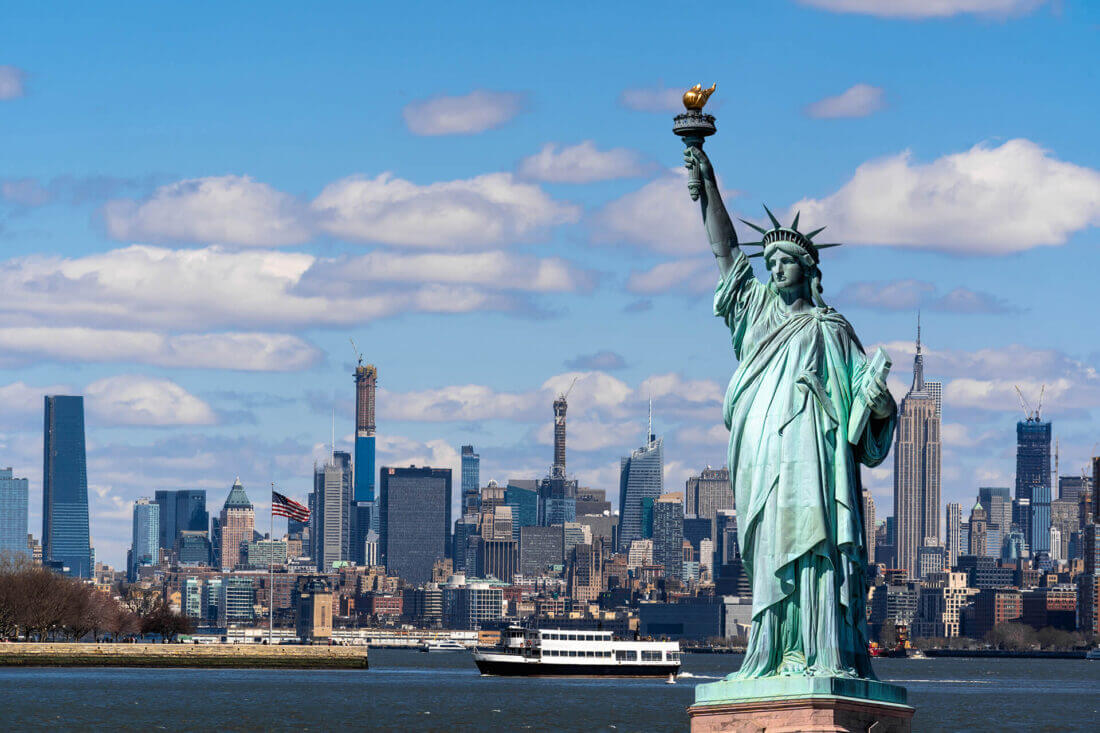

Ride the Staten Island Ferry
The famous Staten ferry system was originally designed to shuttle people over from one shore to another before the bridges were erected. Still, it remains an iconic tourist attraction even today. It takes about 25 minutes to cross from Whitehall Street to St George on Staten Island. The trip is an excellent opportunity to take photos of the Statue of Liberty and Ellis peninsulas, but also of the skyscrapers and bridges of Lower Manhattan. It is estimated that around 22 million passengers use this service every year.
Take a Stroll Across the Brooklyn Bridge
This iconic steel-wire suspension bridge over East River links Manhattan and Brooklyn and was the first one of its kind ever made. It is 1.3 miles long and has six-lanes and one pedestrian and bicycle walkway. Tourists should cross it on foot using a walkway above the road to observe the NYC views and the elaborate cable system anchored in the 275-foot-high, neo-Gothic limestone and granite towers.
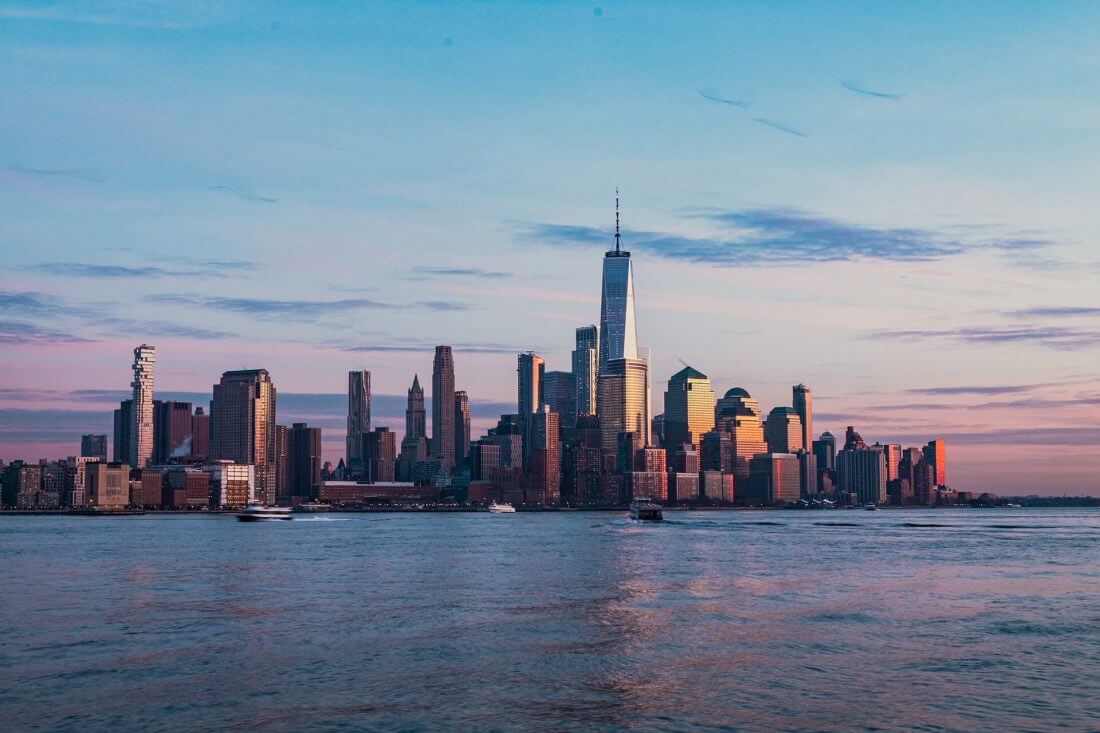

Climb to the Top of the Empire State Building
Until 2011, the tallest point to observe NYC was the roof of the Empire State Building, a product of enormous ambition and desire to build the most colossal building ever made. The 102-story Art Deco skyscraper in Midtown Manhattan today holds the position of the 45th-tallest construction ever made. It is said that on a clear day you can see as far as Pennsylvania and Massachusetts from the observatory.
A fun fact about this building is its 200-foot mooring mast originally intended as a docking point for airships, which were perceived at the time as the transportation method of the future. However, no airship ever docked there due to safety concerns and additional costs.
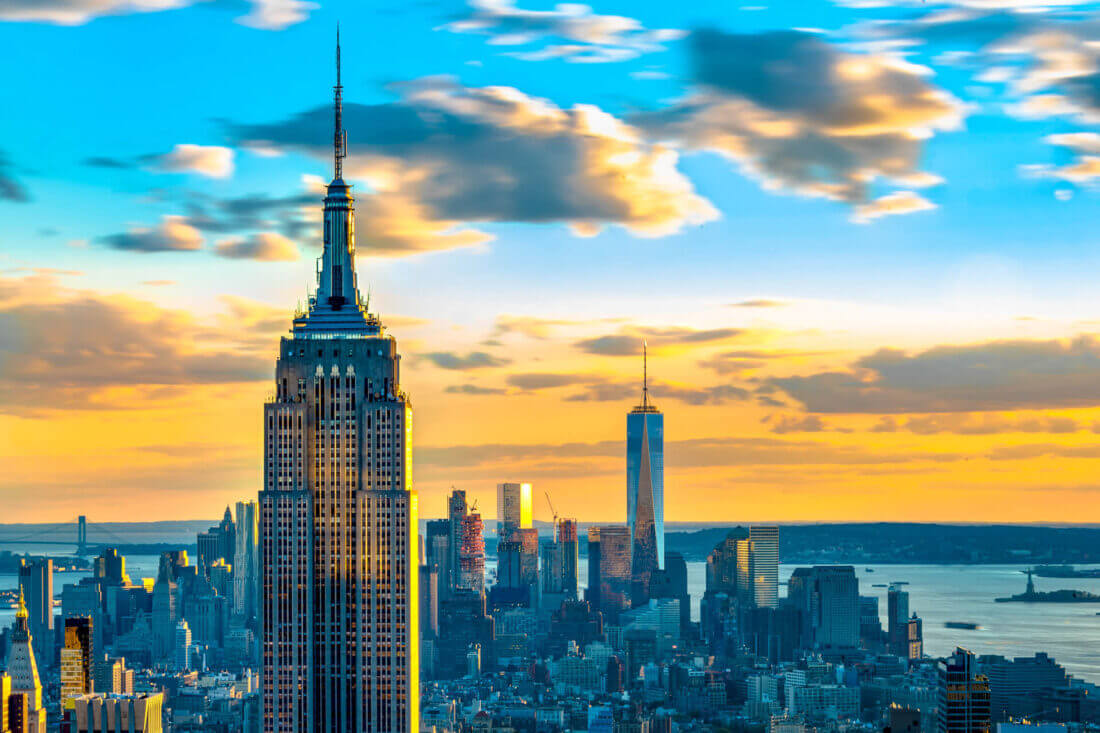

Experience NYC From Above
If you have a chance to see NYC from above, grab it! It is an unbelievable experience and adventure. There are many guided helicopter tours to choose from, and they last from 12 to 30 minutes, depending on the area they cover and the package you choose. The prices range from $98 to $319 for a doors-on or a doors-off ride covering the whole NYC area.
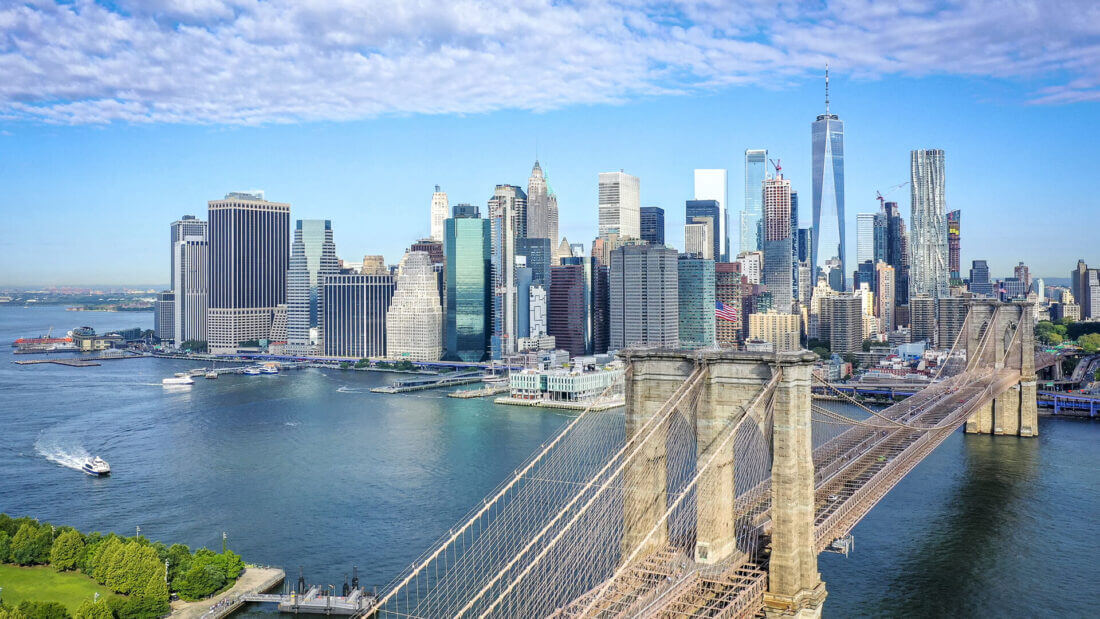

Discover the Secrets of the Grand Central Station
Built in 1913, the Grand Central Station holds many secret passages and tunnels, a whispering gallery, and a kissing room. Underneath the station, there are secret networks of steam-pipe tunnels, underground tracks, and areas used for storage. In these tunnels and tracks, there is a train platform where you can find a hidden entrance and elevator that goes straight up to the Waldorf Astoria hotel. It is believed that President Franklin D. Roosevelt used this as his private entrance to NY so that he could get from his train to the hotel unnoticed. Unfortunately, the secret elevator’s doors have been welded shut at some point.
The whispering gallery or wall is located in the station’s dining concourse. It got its name thanks to the amazing acoustics properties that make a whisper sound like a shout.
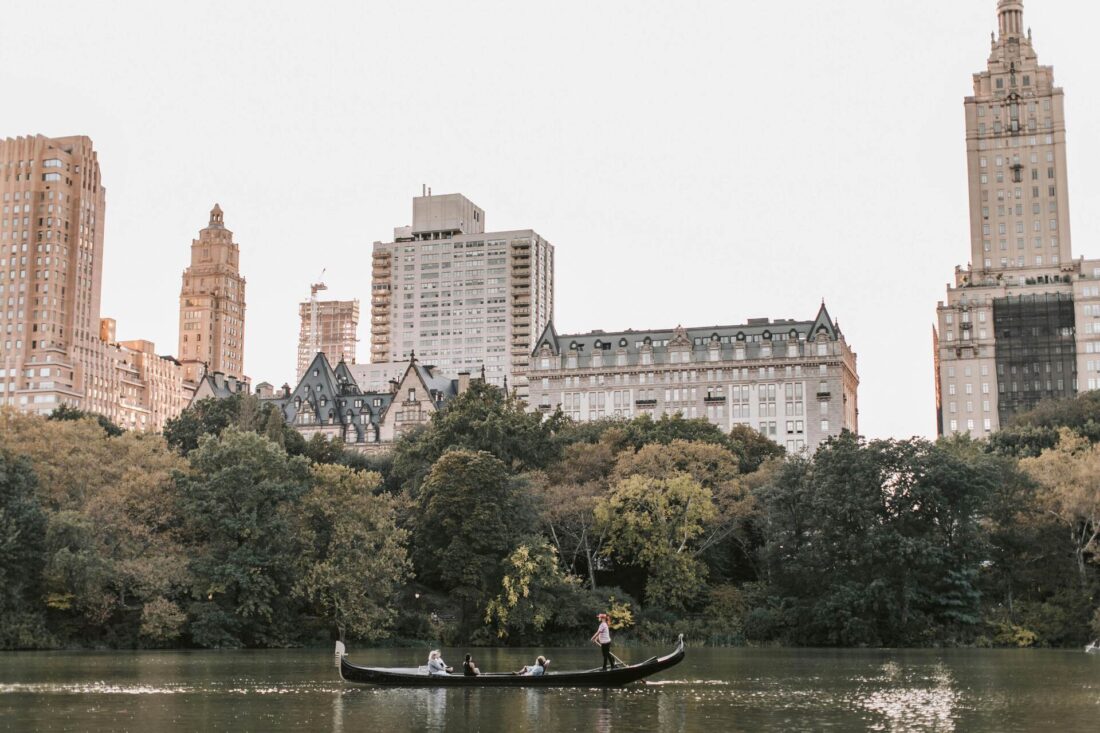

Spend a Weekend at Governors Island
Governors Island is a 172-acre isle located in NY Harbor, accessible by ferry service. The entrance is free, except for the ferry ticket. Back in history, Fort Jay, Castle Williams and the military community stationed there provided protection to NYC. Today, it has become a summer venue open to the public. Visitors are allowed to picnic there or buy from food trucks and tent vendors. Pets are not allowed here, so if you’re moving with a pet, make sure to leave them in good care while checking out this place.


See the Former Brooklyn Barrier at Coney Island
Coney Island has been a holiday venue for the citizens of NYC for a long time. The former Brooklyn Barrier became a peninsula at the turn of the 20th century. It offers several amusement parks, including the oldest functioning wooden roller coaster, opened back in 1927.
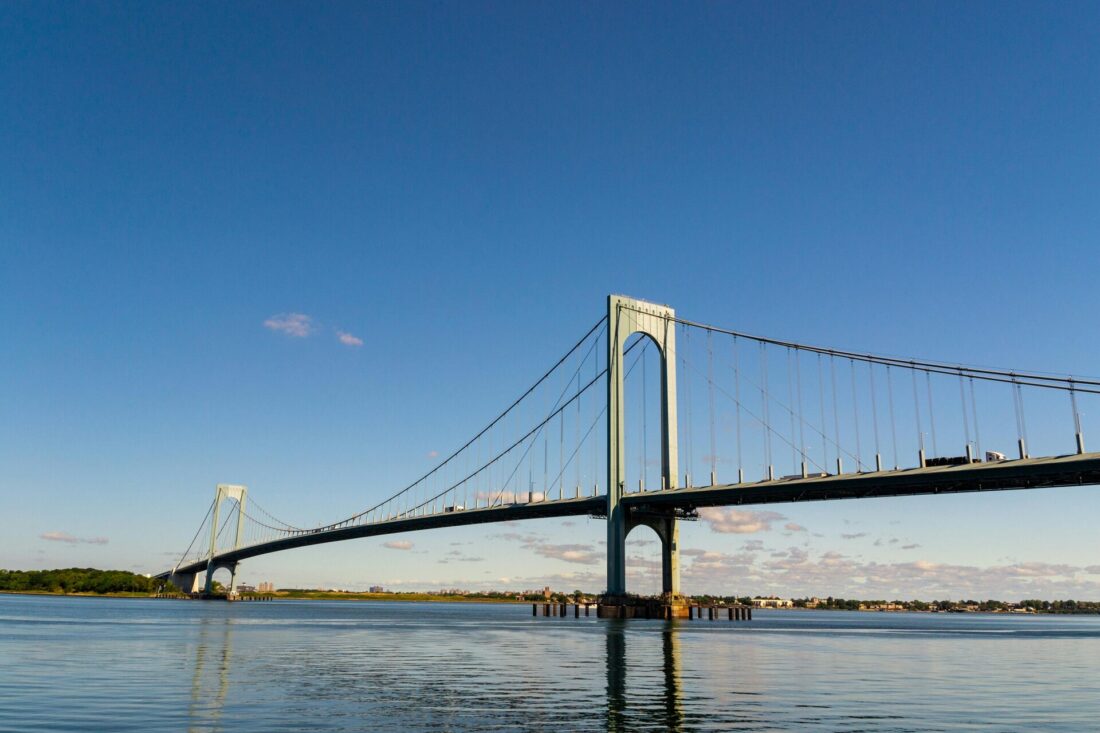

Watch a Free Shakespeare Performance at the Delacorte Theater
You can enjoy a free performance of some of Shakespeare’s plays at The Delacorte Theater in Central Park. It’s an 1800-seat outdoor theater that hosts large-scale productions of works by William Shakespeare every summer. It is one of the best free things to do in NYC, and also a great way to spend your summer days.


Eat Like a True New Yorker
Do you want to eat like a true New Yorker? From the famous pizza and bagels to local favorites such as falafels, you’ll surely feel satisfied once you taste some of the city’s food specialties in any of the five boroughs of New York City. Just go to any of the best restaurants in New York and enjoy your meal.
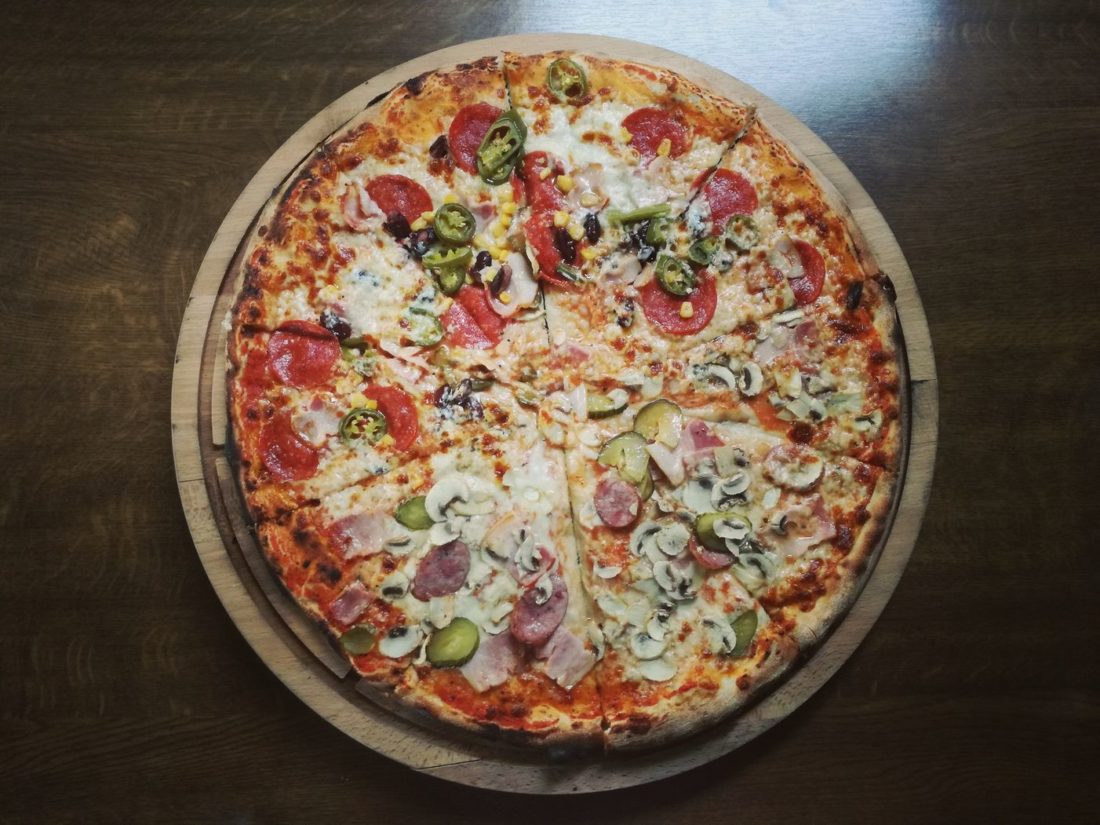

Try Some Authentic NYC Pizza
Maybe they can’t say that they invented pizza, but they surely claimed it and made it their own. So what makes an NYC pizza? Bread, red sauce, and cheese – and not necessarily all three. You can find any type of pizza here, along with a specialty of the city – coal-fired pizza slathered with lots of sauce and shredded, melted mozzarella.
Enjoy a Feast With a Historic Charm at the Chelsea Market
Taking an entire block surrounded by 15th and 16th Streets and Ninth and Tenth Avenues, the Chelsea Market is a food hall where you can enjoy some of the iconic meals of the Big Apple. The place was originally the site of the National Biscuit factory complex where the Oreo cookie was invented and produced. Today it’s the home to around 40 amazingly diverse and distinct dining options.
Enjoy NYC by Night
Experiencing NYC by night is a story for itself. Start with the stunning view of the harbor and skyline, which you can see if you take an after-sunset-cruise around Lower Manhattan, the Statue of Liberty and then under the Brooklyn Bridge up to the Empire State Building.
If your schedule allows it, visit the Radio City Music Hall within the Rockefeller Center, an iconic Art Deco live entertainment venue hosting numerous concerts and live broadcasts, including the performances of Ella Fitzgerald, the Rolling Stones, and Lady Gaga.
Queens Night Market is another night gem in NYC if you’re into food markets. In this open-air bazaar, you can choose from the cuisines of 80 countries around the globe. It also offers live music and stage performances such as Bollywood dancers, DJs, and more.
See a Broadway Show
Broadway, also known as the “Great White Way” after the white advertising lights, is a theatre district situated around Times Square, comprising over 41 venues with 500 seats or more. Broadway is what made NYC the cultural capital known all over the globe. Seeing a Broadway musical has been a prestigious event both for New Yorkers and visitors since many of the Hollywood stars started from there. The three most popular productions are Phantom of the Opera at the Majestic, Chicago at the Ambassador, and Lion King at the Minskoff Theatre.
Go Classy for the Metropolitan Opera House
Velvet stairs, ceilings coated with gold and suspending 21-crystal chandeliers emitting sparkling lights make visiting the Metropolitan Opera House at the Lincoln Center truly magical. This technologically-advanced venue can accommodate around 3,800 spectators and stage four different operas a week, including grand productions. Among opera masterpieces staged here are Aida, Madama Butterfly, Carmen, The Flying Dutchman, The Magic Flute, La Bohème, and Porgy & Bess. The American Ballet Theatre also performs at the Met.
A Night Out at the Lincoln Center
Along with the Metropolitan Opera and the NYC Ballet, the Lincoln Center, a complex of buildings in the Lincoln Square neighborhood of Manhattan, is also home to the NYC Philharmonic, which makes it a cultural hub of NYC.
More than 5 million visitors it receives annually can choose between opera, ballet, and concerts, both classic and modern ones. Lincoln Center for the Performing Arts organizes approximately 3,000 programs, high-profile corporate and media events, film premieres, and initiatives each year.
Don’t Miss a Cinematic Feast at Nitehawk Cinema
Nitehawk Cinema is the first dine-in, drink-up movie theater in NYC situated in Williamsburg. Each of its theaters serves complete meals, sometimes even matched with the film on the screen. The Cinema shows retro movies, as well as the latest indie releases.
Catch a Movie at Metrograph
Metrograph is a movie theater organizing excellent movie programs and events for real movie-fans, such as holiday-themed classics, retrospectives, and panel discussions. There is also a buffet, serving menu inspired by early Hollywood studio cafeterias.
Enjoy Quality Comedy at the Upright Citizens Brigade Theatre
UCB is considered the best improvisation theater in NYC. It often calls up established comedy performers and musicians to participate in its shows, some of which have been lasting a long time.
Have a Good Laugh at the Comedy Cellar
Another popular comedy venue is Comedy Cellar. This subterranean club is very popular, so nights here can be crowded, but with due reason – it often hosts celebrities such as Jerry Seinfeld, although the local performers are excellent as well. However, bear in mind that the front row audience can expect to become an unwilling object of the comedians’ jokes.
Watch a Game at the Yankee Stadium
Even though this is a newly-built stadium, it has still kept some of the design elements of its predecessor, along with the iconic frieze. Ballgames can be seen from April to October, even at a very low price.
Enjoy a Baseball Game at the MCU Park
MCU is a minor league baseball stadium on the Coney Island waterfront. Watching the Cyclones games so close to the beach is quite an experience, and it comes at low prices. You can even watch fireworks after the game sometimes. The fact that it overlooks the Atlantic Ocean and some of the Coney Island attractions adds to the magic.


Take a Swim at the Astoria Pool
This is one of the largest public swimming pools in the country. It is said that its creator designed it so that the swimmers can admire his work of art, the RFK bridge. Whatever the intentions, this pool will offer relief from the daily heat, free of charge.


Create Your Own List of Things to Do In New York City After You Move
The Big Apple has a lot to offer, and all you have to do is figure out how to move here and create a plan. Look through the best places to live in New York and think about employing a reliable New York moving company to handle your relocation.





